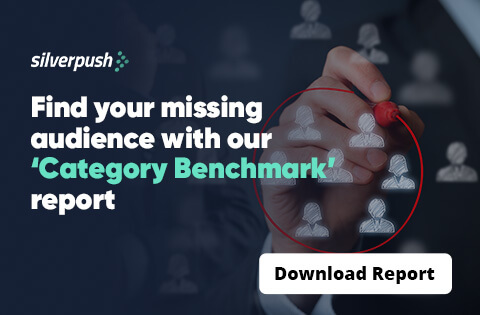Understanding the Importance of Contextual Targeting and Relevance of Ads | 01 Jun, 2022

Want to know what’s trending in the digital advertising? We all know, these days, digital advertising is all about delivering the correct message to the target audience at the right moment. Now, assume watching a video of a food blogger and a Zomato ad pops up on the video. Will you click on the ad? The chances of that happening are very high! The reason for this is contextual targeting and the relevance of ads.
With the announcement of bringing down third-party cookies by major global companies like Apple and Google, ad-tech companies are striving to find new ways to display their ads without hindering users’ privacy. Besides contextual advertising, there is also behavioral targeting. However, it may not be the most effective way to serve relevant ads to users. Thus, it is often said contextual targeting in advertising is the next big thing.
Now, before we move forward with explaining the need for contextual targeting and why it is gaining popularity these days, let me walk you through the meaning of contextual targeting or advertising.
What is Contextual Targeting?
Contextual targeting or advertising refers to the placement of a display ad on websites that are directly related to the product being offered in the ad. In short, the content of the ad is closely tied to the content of the site/page. It’s an old and simple strategy which wasn’t super popular before because it’s performance was lower than targeting using cookies. However, in reality it is one of the most dominant forms of online advertising.
Have you ever come across a banner ad advertising flight bookings on a page offering tour packages in a country? If yes, you have experienced what contextual advertising is!
Moreover, search engines also utilize this strategy to display ads on their result pages. It is accomplished by matching the terms in the search query to the content in the advertisement.
Importance of Contextual Targeting and Relevance
With privacy ranking first, on the list of the online audiences, contextual advertisement and relevancy of ads were never more important.
Well, you don’t need to trust me. Trust the data instead!
According to reports and interviews with many people, the following findings have emerged:
- Nearly 70% of consumers feel ads are more likely to be recalled when they appear next to relevant information.
- 7 out of 10 viewers have said that consumer impression of an online ad and the brand linked with it is influenced by the content surrounding it.
- When companies provide contextually appropriate ads, almost two-thirds (65%) of customers have a more favorable perception of those brands.
How Does Contextual Advertising Works?
Now comes the real deal! Here we have explained the working of the contextual advertising and the methodology behind it. It generally involves the process contextual targeting through a demand-site platform that will place your ads on platforms which matches the parameter. This is how the process works:
1st Step: Choose the parameters for Contextual Advertising
Keyword selection is an important step in this process. You need to target keywords, as well as topics and phrases to the Display Network ad groups. At first you can start broad like ‘Autos & Vehicles’ and then can get more specific like ‘Trucks & SUVs’, or ‘Commercial Vehicles’, etc.
This is done to precise the targeting within you topic and sub-topics. As per the research done by Google, each campaign should use 5-50 keywords, including negative keywords to help the network match your ad to website content.
2nd Step: Google analyzes the pages
Once you place an order, Google analyzes the pages to the web page which matches your ad with the most relevant content. In case if you target keywords in the same ad group, your content is displayed first when Google selects where to show your ads.
3rd Step: Ad placement is done contextually
After the Google analyzes your ad, the display network will find placement of your ad contextually. For example, when keywords as selected by you match the central theme of a website, or concept of that site, your ad is then showed up on that website.
Importance of Contextual Advertising
Contextual targeting is a demanded tool for companies that have helped them in targeting their segmented audience group at the right time and place. Some of the advantages of contextual ads that caused the new rise of contextual advertising are:
- Unlike behavioral advertising, which requires users’ personal information, contextual targeting relies on less personal information. This makes it a secure and desirable option for most businesses that must adhere to privacy requirements such as GDPR.
- Contextual advertising is less disruptive than typical banner ads since they are particularly targeted at an audience who is interested in the content of the page/video.
- Unlike traditional advertising strategies, contextual advertising is cost-effective and does not hurt the advertisers’ pockets.
- Contextual ad targeting is the most effective way to increase product sales by achieving its primary goal of reaching the targeted demographic. This occurs as a result of a good study on keywords, keyword phrases, and the application of AI technology.
- When people visiting the websites see ads that are relevant to the content, the product’s brand recognition increases. This in turn leads to larger audience engagement and improves the company’s income through increasing sales.
Third-Party Cookies Out, Contextual Advertising In
Consumers worldwide are becoming more informed, and public and governmental demands are increasing on the advertisement industry to restrict or limit the gathering of user data.
As a result, cookie-based ad targeting is becoming increasingly difficult, and many internet browsers are now taking steps to limit cookie use.
With GDPR and CCPA legislation requiring greater use of personal data and privacy protection, there is an increase in demand for contextual targeting.
The nice part about contextual advertisements is that they do not require any personal information from consumers to target them. Instead, they analyze session data, such as a user’s current webpage, to establish the individual’s intentions and interests. Being interpretative data is obtained from the user’s activity.
Brand Safety and Suitability – Important Part of Contextual Targeting
According to a study, 43 percent of customers have stopped doing business with a brand in which they have lost trust.
Brand safety and suitability are always changing and play an important part in sustaining a brand’s reputation in the digital advertising sphere.
Moreover, brand safety policies have also been highlighted by digital marketers, agencies, and media alike. This is critical if you do not want to lose clients as a result of poor brand alignment.
Brand suitability bridges the risk-opportunity gap by enabling digital marketers to target safe, acceptable, and brand-building content using context-based controls.
Silverpush – Placing Ads in Contextual Moments
With third-party cookies being phased out, it has become even more important for ad-tech companies to find better ways to engage with customers. And the solution to that is contextual targeting.
Silverpush’s flagship product Mirrors effortlessly performs context-relevant video level ad targeting for brands using human-enhanced AI technology.
Content-aligned ad placement, brand safety, and customized brand suitability are all guaranteed, along with reaching the largest possible audience.
An example of this is its tie-up with IKEA, where it helped the company achieve CTR of 0.55% and 104% view rates with Mirrors.

BLOGS
Super Bowl Advertising: A Month-Long, Multi-Screen Event for Brands
For Americans, there are two events that they hyped for a whole year - Football season, and waiting for football season. Football remains highly popular among Americans, with searches for "NFL Draft" and viewership numbers showing an unwavering interest in the sport. According to Google Search data, football is more ...

BLOGS
Advertising in the Age of Climate Change: The Adoption of Carbon Emission Metrics
The urgency of the climate crisis is increasing, and the media industry is no exception. While some professionals are working to reduce their direct operational emissions, there is an urgent need for common standards to be set for indirect emissions that come from digital advertising. The digital advertising industry is becoming ...

BLOGS
Complete Guide to Reaching Audience with Cookieless Advertising
What’s your alternative game plan for effective cookieless advertising? Haven't thought about it yet? The time is now! Introduction The complete year of 2022 was dedicated to cookies! Panic is setting in amongst marketers owing to mounting privacy laws and the ban on cookies, causing them to re-evaluate their strategies.







